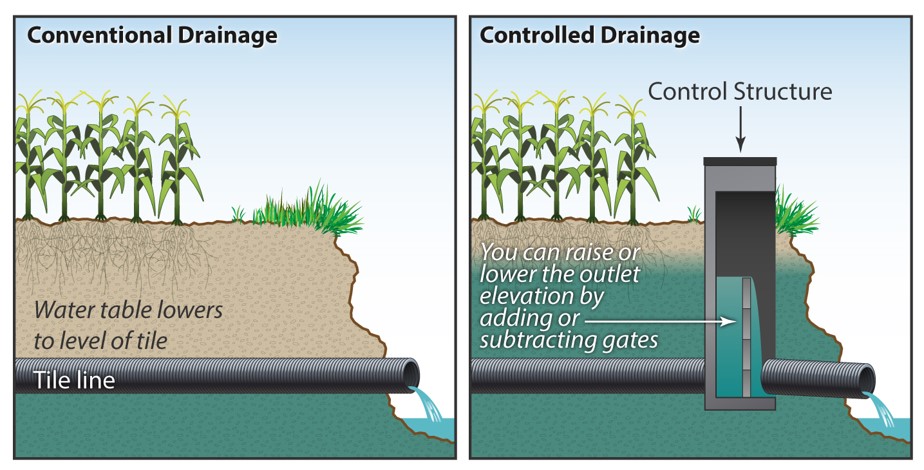Controlled Drainage
Controlled Drainage, commonly referred to as drainage water management, uses a control structure to manage a drainage system’s outlet height. By controlling the outlet height the manager can control the time of year and volume of water that is drained. Restricting flow during the periods when drainage is not necessary reduces the amount of tile transported nutrients by decreasing the volume of water discharged. Increases in crop yield can be realized if water is able to be held back for the time of year when crops operate at a water deficit. Managers should follow a drainage water management plan prepared specifically for their field and drainage system.

Control structure installationNRCS/SWCS photo by Lynn BettsTrenching in the mainNRCS/SWCS photo by Lynn BettsSubsurface float valveNRCS/SWCS photo by Lynn BettsDrainage installed on the contourNRCS/SWCS photo by Lynn Betts
Previous
Next
Location
Controlled drainage works when there are management zones within a field with slopes <1%. The larger the zones with slopes <1%, the more economical the practice.Click here to view the controlled drainage suitability map created by Transforming Drainage project team.
Footprint
A structure that controls the outlet height sits on the main at the edge of the field. Subsurface float valves can be used in the field to avoid in field obstructions. Laterals are installed on the contour which potentially calls from more connections and smaller runs during installation.
Performance
Nitrate reductions of 48% can be realized by reducing the flow from the tile when it is not needed. Controlled drainage can also decrease dissolved reactive phosphorus flow by 57% with the potential to increase yields by 5-10%.
Economics
$
1
per Acre
Average installation cost is $49 per acre greater than conventional drainage
$
0
Practice cost per pound of N removed
Financial Assistance
Controlled drainage systems are eligible for financial assistance through the NRCS EQIP Â program. There are Conservation Practice Standards available to help pay for the control structures, additional sub-mains that may be needed to manage the water levels, and for the drainage water management plan. Your state may also have state or private funding available. For more information, please refer to the ADMC Financial Assistance page.
NRCS CPS 554 Drainage Water Management
NRCS CPS 587 Structure for Water Control
